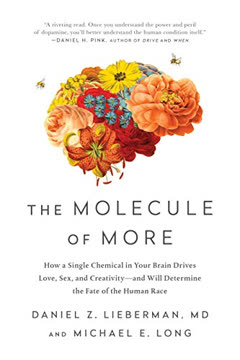Key Takeaways
1. Muscle hypertrophy results from mechanical tension, metabolic stress, and muscle damage
Mechanical tension alone has been shown to directly stimulate mTOR, possibly through activation of the extracellular signal–regulated kinase/tuberous sclerosis complex 2 (ERK/TSC2) pathway.
Mechanical tension is the primary driver of muscle growth. It activates mechanosensors in muscle fibers, triggering anabolic signaling pathways. This process, called mechanotransduction, converts mechanical forces into chemical signals that promote protein synthesis.
Metabolic stress also contributes to hypertrophy. It occurs due to the accumulation of metabolites like lactate and hydrogen ions during resistance exercise. This stress may enhance muscle growth by:
- Increasing muscle fiber recruitment
- Stimulating anabolic hormone production
- Causing cell swelling, which may activate protein synthesis
Muscle damage, while not essential, can augment hypertrophy. It triggers inflammatory responses and satellite cell activation, potentially enhancing muscle repair and growth. However, excessive damage can impair recovery and growth.
2. Resistance training variables critically influence hypertrophic outcomes
Resistance training programs are a composite of program design variables that include volume, frequency, load, exercise selection, type of muscle action, rest interval length, repetition duration, exercise order, range of motion, and intensity of effort.
Volume refers to the total work performed, typically measured as sets × repetitions × load. Higher volumes generally produce greater hypertrophy, up to a point of diminishing returns.
Frequency is how often a muscle group is trained. While traditional bodybuilding often uses split routines with lower frequency, research suggests potential benefits to higher frequencies.
Load (percentage of 1RM) influences fiber recruitment and metabolic stress. A range of loads can be effective, but moderate loads (6-12RM) may provide an optimal combination of tension and metabolic stress.
Other key variables include:
- Exercise selection (multi-joint vs. single-joint)
- Muscle action type (concentric, eccentric, isometric)
- Rest interval length
- Repetition tempo
- Range of motion
Manipulating these variables allows for program customization and prevents adaptation plateaus.
3. Genetics, age, sex, and training status impact muscle growth potential
A theoretical upper limit to muscle fiber size exists, which is ultimately determined by a person's genotype and phenotype.
Genetic factors significantly influence hypertrophic potential. These include:
- Muscle fiber type distribution
- Satellite cell content and responsiveness
- Anabolic hormone production
- Expression of growth-related genes
Age affects muscle growth capacity. While older individuals can still gain muscle, the rate and magnitude of gains typically decrease with age due to:
- Reduced anabolic hormone levels
- Decreased satellite cell function
- Increased inflammation
Sex differences in muscle growth are primarily due to hormonal variations, with men generally having a higher potential for absolute muscle gains due to higher testosterone levels.
Training status impacts hypertrophic responsiveness. Untrained individuals experience rapid initial gains, while trained individuals face diminishing returns as they approach their genetic potential.
4. Proper nutrition is essential for maximizing hypertrophy
A positive energy balance alone is a potent stimulator of anabolism, even in the absence of resistance exercise training, provided that the intake of dietary protein is adequate.
Caloric surplus is crucial for optimal muscle growth. A moderate surplus of 300-500 calories per day is generally recommended for most individuals.
Protein intake is critical. Recommendations for maximizing hypertrophy:
- 1.6-2.2 g/kg of body weight per day
- High-quality, complete protein sources
- Evenly distributed intake throughout the day
Carbohydrates support training performance and recovery. A minimum of 3-5 g/kg/day is suggested, with higher intakes potentially beneficial for some individuals.
Fats play essential roles in hormone production and overall health. A minimum of 0.5-1 g/kg/day is recommended, with emphasis on unsaturated sources.
5. Periodization optimizes long-term muscle growth
To avoid overtraining and ensure ongoing increases in growth, lifters must periodize their exercise programs over time.
Periodization involves systematic manipulation of training variables over time to optimize adaptations and prevent stagnation. Key concepts include:
- Progressive overload: Gradually increasing training stress
- Variation: Altering exercises, loads, and volumes
- Recovery: Incorporating planned deload periods
Common periodization models:
- Linear: Progressing from high volume/low intensity to low volume/high intensity
- Undulating: Frequently varying volume and intensity
- Block: Focusing on specific adaptations in distinct training phases
Periodization helps prevent overtraining, reduces injury risk, and allows for continued progress over extended periods.
6. Both multi-joint and single-joint exercises are important for complete muscular development
Maximal hypertrophy can be achieved only by systematically varying the exercise performed and fully working all aspects of the targeted musculature.
Multi-joint exercises (e.g., squats, bench press, rows):
- Allow for greater overall loading
- Engage multiple muscle groups simultaneously
- Mimic functional movement patterns
Single-joint exercises (e.g., bicep curls, leg extensions):
- Allow for targeted muscle activation
- Can address weak points or lagging muscle groups
- May provide unique stimuli for growth
A comprehensive program should include both types of exercises to ensure complete muscular development and balanced aesthetics.
7. Higher training volumes generally produce superior hypertrophic gains
Evidence for a dose–response relationship between volume and hypertrophy is compelling: higher training volumes are clearly and positively associated with greater muscular gains.
Volume is a primary driver of hypertrophy. Research consistently shows that:
- Multiple sets per exercise outperform single sets for muscle growth
- Higher weekly set volumes (e.g., 10+ sets per muscle group) often produce greater hypertrophy
However, there is an upper limit to beneficial volume, beyond which:
- Recovery may be impaired
- Risk of overtraining increases
- Gains may plateau or decline
Optimal volume is individual and depends on factors like training status, genetics, and recovery capacity. Progressive volume increases over time can help maximize long-term gains.
8. Moderate loads (6-12RM) may provide optimal hypertrophic stimulus
Training across a wide spectrum of repetition ranges (1 to 20+) is recommended to maximize all possible avenues for the complete development of the whole muscle.
While a range of loads can stimulate hypertrophy, moderate loads (6-12RM) may offer an optimal combination of mechanical tension and metabolic stress:
- Heavy loads (1-5RM): Maximize mechanical tension and neural adaptations
- Moderate loads (6-12RM): Balance tension and metabolic stress
- Light loads (15+RM): Emphasize metabolic stress and potentially target Type I fibers
Incorporating varied loading schemes can:
- Target different fiber types
- Provide diverse stimuli for growth
- Prevent adaptive resistance
Periodizing load ranges over time may optimize long-term hypertrophic adaptations.
9. Sufficient rest between sets enhances muscle growth
Current research does not support such a contention. In fact, longer interset rest periods may enhance hypertrophy by allowing for maintenance of a greater volume load.
Longer rest intervals (2-3+ minutes) between sets may be superior for hypertrophy by:
- Allowing for greater total volume in a workout
- Maintaining higher intensities across sets
- Potentially optimizing hormone responses
However, shorter rest intervals (60-90 seconds) can:
- Increase metabolic stress
- Enhance the muscle pump
- Improve time efficiency of workouts
A periodized approach to rest intervals, varying them based on the goal of each training phase, may be optimal for long-term hypertrophy.
10. Post-exercise protein intake amplifies the anabolic response
Muscles become sensitized to nutrient administration so that muscle protein synthesis is blunted until amino acids are consumed.
Protein timing around workouts can enhance the anabolic response:
- Consuming protein within ~2 hours post-exercise may be optimal
- A dose of ~20-40g of high-quality protein is typically recommended
Key considerations:
- Leucine content: 2-3g of leucine may "trigger" maximal protein synthesis
- Fast-digesting sources (e.g., whey) may be preferable post-workout
- Total daily protein intake is more important than precise timing
While nutrient timing can optimize the response, it's not necessary for hypertrophy if total daily protein intake is sufficient.
Last updated:
FAQ
What's Science and Development of Muscle Hypertrophy about?
- Comprehensive Guide: The book offers an extensive overview of muscle hypertrophy, detailing physiological mechanisms and factors influencing muscle growth.
- Practical Application: It aims to apply scientific principles to real-world training scenarios, helping readers customize hypertrophy programs based on individual needs.
- Historical Context: Traces the evolution of muscle-building practices, highlighting the importance of research in shaping effective training regimens.
Why should I read Science and Development of Muscle Hypertrophy?
- Evidence-Based Insights: Authored by Brad Schoenfeld, a leading expert, the book is grounded in scientific research, compiling nearly 500 peer-reviewed studies.
- Practical Strategies: Provides actionable strategies for training and nutrition, suitable for both beginners and experienced lifters.
- Comprehensive Coverage: Covers a wide range of topics, including training variables, nutrition, and genetics, offering a holistic understanding of muscle hypertrophy.
What are the key takeaways of Science and Development of Muscle Hypertrophy?
- Hypertrophy Mechanisms: Identifies three primary mechanisms: mechanical tension, metabolic stress, and muscle damage, crucial for designing effective training programs.
- Training Variables: Discusses key variables like volume, frequency, and load, emphasizing their roles in maximizing muscle growth.
- Nutrition's Role: Highlights nutrition as a critical component, discussing macronutrient intake, nutrient timing, and energy balance.
What are the best quotes from Science and Development of Muscle Hypertrophy and what do they mean?
- "Muscular adaptations are predicated on net protein balance over time.": Emphasizes the importance of maintaining a positive protein balance for muscle growth.
- "Mechanical tension may be the most important factor in training-induced muscle hypertrophy.": Highlights the crucial role of tension in stimulating growth.
- "Hypertrophy can occur in series or in parallel.": Refers to different ways muscles can grow, influencing training strategies.
What are the mechanisms of hypertrophy discussed in Science and Development of Muscle Hypertrophy?
- Mechanical Tension: Involves stress on muscles during resistance training, triggering pathways that promote growth.
- Metabolic Stress: Accumulation of metabolites like lactate creates an environment conducive to growth.
- Muscle Damage: Exercise-induced damage stimulates repair processes leading to hypertrophy.
How does Science and Development of Muscle Hypertrophy address training variables?
- Volume and Frequency: Higher training volumes are associated with greater hypertrophic responses; beginners should aim for 40 to 70 repetitions per session.
- Load and Exercise Selection: Varying loads and selecting appropriate exercises target different muscle groups effectively.
- Rest Intervals: Rest intervals of 60 to 90 seconds optimize hypertrophy by balancing stress and tension.
What role does nutrition play in hypertrophy according to Science and Development of Muscle Hypertrophy?
- Energy Balance: Maintaining a positive energy balance is essential for muscle growth.
- Macronutrient Intake: Sufficient protein intake supports muscle protein synthesis; nutrient timing enhances recovery.
- Nutrient Timing: Consuming protein and carbohydrates post-workout enhances recovery and growth.
How does Science and Development of Muscle Hypertrophy explain the role of genetics in hypertrophy?
- Genetic Influence: Genetics significantly determine an individual's potential for muscle growth.
- Hypertrophic Responders vs. Nonresponders: Some individuals experience significant gains, while others see minimal changes.
- Satellite Cell Activity: Genetic differences in satellite cell response influence hypertrophic potential.
What is the role of hormones in muscle hypertrophy as discussed in Science and Development of Muscle Hypertrophy?
- Hormonal Influence: Hormones like testosterone and growth hormone play critical roles in muscle growth.
- Anabolic vs. Catabolic: Resistance training elevates anabolic hormones, promoting a favorable environment for growth.
- Individual Variability: Hormonal responses vary among individuals, impacting training effectiveness.
How does Science and Development of Muscle Hypertrophy address the impact of age on muscle growth?
- Sarcopenia Explained: Discusses age-related muscle loss and how resistance training can mitigate it.
- Anabolic Resistance: Older adults may experience anabolic resistance, requiring different strategies.
- Long-Term Training Benefits: Consistent resistance training can lead to significant gains in older populations.
What training methods are recommended in Science and Development of Muscle Hypertrophy?
- Progressive Overload: Fundamental principle for inducing hypertrophy through increased resistance.
- Variety of Techniques: Includes high-intensity training, volume training, and different rep ranges.
- Recovery Importance: Stresses the importance of recovery and rest periods for muscle repair and growth.
How does Science and Development of Muscle Hypertrophy explain the concept of muscle fiber types?
- Fiber Type Variability: Individuals have different proportions of muscle fiber types, influencing hypertrophic response.
- Training Adaptations: Different modalities target specific fiber types, leading to varied adaptations.
- Genetic Influence: Genetic factors play a significant role in determining muscle fiber composition and response.
Review Summary
Science and Development of Muscle Hypertrophy is highly praised as a comprehensive, science-based guide to muscle growth. Readers appreciate its thorough research, practical takeaways, and myth-busting approach. Many consider it the definitive resource on hypertrophy, ideal for fitness professionals and enthusiasts. Some find the early chapters dense with scientific jargon, but most agree the later sections offer valuable, applicable information. The book is commended for its objectivity, extensive references, and the author's expertise. While some desire more practical exercise plans, overall it's regarded as an essential read for understanding muscle development.
Similar Books










Download PDF
Download EPUB
.epub digital book format is ideal for reading ebooks on phones, tablets, and e-readers.




